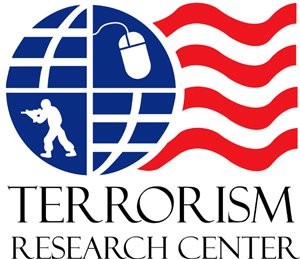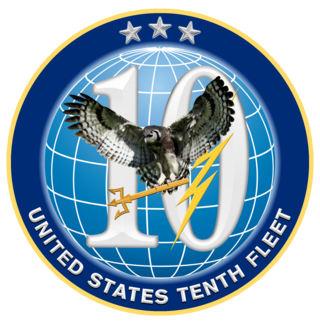Related Research Articles
Full-spectrum dominance also known as full-spectrum superiority, is a military entity's achievement of control over all dimensions of the battlespace, effectively possessing an overwhelming diversity of resources in such areas as terrestrial, aerial, maritime, subterranean, extraterrestrial, psychological, and bio- or cyber-technological warfare.

Information warfare (IW) is the battlespace use and management of information and communication technology (ICT) in pursuit of a competitive advantage over an opponent. It is different from cyberwarfare that attacks computers, software, and command control systems. Information warfare is the manipulation of information trusted by a target without the target's awareness so that the target will make decisions against their interest but in the interest of the one conducting information warfare. As a result, it is not clear when information warfare begins, ends, and how strong or destructive it is.
NATO Joint Military Symbology is the NATO standard for military map symbols. Originally published in 1986 as Allied Procedural Publication 6 (APP-6), NATO Military Symbols for Land Based Systems, the standard has evolved over the years and is currently in its fifth version (APP-6D). The symbols are designed to enhance NATO's joint interoperability by providing a standard set of common symbols. APP-6 constituted a single system of joint military symbology for land, air, space and sea-based formations and units, which can be displayed for either automated map display systems or for manual map marking. It covers all of the joint services and can be used by them.
Network-centric warfare, also called network-centric operations or net-centric warfare, is a military doctrine or theory of war that aims to translate an information advantage, enabled partly by information technology, into a competitive advantage through the computer networking of dispersed forces. It was pioneered by the United States Department of Defense in the 1990s.

The Terrorism Research Center (TRC) is a non-profit think tank focused on investigating and researching global terrorism issues through multi-disciplinary collaboration amongst a group of international experts.
Battlespace or battle-space is a term used to signify a military strategy which integrates multiple armed forces for the military theatre of operations, including air, information, land, sea, cyber and outer space to achieve military goals. It includes the environment, timeframe and other factors, and conditions that must be understood to successfully apply combat power, protect the force, or complete the mission. This includes enemy and friendly armed forces, infrastructure, weather, terrain, and the electromagnetic spectrum within the operational areas and areas of interest.

Command and control is a "set of organizational and technical attributes and processes ... [that] employs human, physical, and information resources to solve problems and accomplish missions" to achieve the goals of an organization or enterprise, according to a 2015 definition by military scientists Marius Vassiliou, David S. Alberts, and Jonathan R. Agre. The term often refers to a military system.

The U.S. Tenth Fleet is a functional formation and a numbered fleet in the United States Navy. It was first created as an anti-submarine warfare coordinating organization during the Battle of the Atlantic in the Second World War. It was reactivated as a force provider for Fleet Cyber Command on 29 January 2010. U.S. Tenth Fleet serves as the numbered fleet for U.S. Fleet Cyber Command and exercises operational control of assigned naval forces to coordinate with other naval, coalition and Joint Task Forces to execute the full spectrum of cyber, electronic warfare, information operations, and signal intelligence capabilities and missions across the cyber, electromagnetic, and space domains.
Proactive cyber defense, means acting in anticipation to oppose an attack through cyber and cognitive domains. Proactive cyber defense can be understood as options between offensive and defensive measures. It includes interdicting, disrupting or deterring an attack or a threat's preparation to attack, either pre-emptively or in self-defence.

The U.S. Army Cyber Command (ARCYBER) conducts information dominance and cyberspace operations as the Army service component command of United States Cyber Command.
Cyberwarfare is the use of computer technology to disrupt the activities of a state or organization, especially the deliberate attacking of information systems for strategic or military purposes. As a major developed economy, the United States is highly dependent on the Internet and therefore greatly exposed to cyber attacks. At the same time, the United States has substantial capabilities in both defense and power projection thanks to comparatively advanced technology and a large military budget. Cyber warfare presents a growing threat to physical systems and infrastructures that are linked to the internet. Malicious hacking from domestic or foreign enemies remains a constant threat to the United States. In response to these growing threats, the United States has developed significant cyber capabilities.

The U.S. Marine Corps Forces Cyberspace Command is a functional formation of the United States Marine Corps to protect critical infrastructure from cyberattack. Marine Corps Forces Cyberspace Command is the Marine Corps component to U.S. Cyber Command. It comprises a command element, the Marine Corps Cyber Operations Group, and the Marine Corps Cyber Warfare Group, a total of approximately 800 personnel. MARFORCYBER was established on January 21, 2010 under the command of LtGen George J. Flynn,. As of 7 July 2021, MajGen Ryan P. Heritage is in command.

The military-digital complex (MDC) is the militarization of cyber operations by governments and corporations, often through monetary relationships between computer programmers in private companies and the military to combat the threat of cyber terrorism and warfare. Cyber operations since 2000 have increased dramatically, with the recent branch of the US Strategic Command the United States Cyber Command. Cyber operations has been defined by the Washington Post as,
The 2011 U.S. Department of Defense Strategy for Operating in Cyberspace is a formal assessment of the challenges and opportunities inherent in increasing reliance on cyberspace for military, intelligence, and business operations. Although the complete document is classified and 40 pages long, this 19 page summary was released in July 2011 and explores the strategic context of cyberspace before describing five “strategic initiatives” to set a strategic approach for DoDʼs cyber mission.

The U.S. Fleet Cyber Command is an operating force of the United States Navy responsible for the Navy's information network operations, offensive and defensive cyber operations, space operations and signals intelligence. It was created in January 2010 "to deter and defeat aggression and to ensure freedom of action to achieve military objectives in and through cyberspace". U.S. Tenth Fleet was simultaneously reactivated as its force provider. Since it was founded, the command has grown into an operational force composed of more than 16,000 active and reserve sailors and civilians organized into 27 active commands, 40 Cyber Mission Force units, and 27 reserve commands around the world.

A rhizome manoeuvre is a surprise attack in a built environment, made from an unexpected direction, such as through a wall or floor. It is a key concept in contemporary warfare tactics, techniques, and procedures.
Three-Dimensional (3D) Tactics Analysis, is a tactical analysis methodology under the concept of Terrorist Tactics, Techniques, and Procedures, and is related to Rhizome Manoeuvre. The approach is applicable to urban combat, and takes into account mass gatherings of people located in highly complex urban structures, incorporating features such as multi-level buildings, open spaces between buildings, crowd congregation points, and transport hubs.
Mimicking operations is a tactical concept, developed under Terrorist Tactics, Techniques, and Procedures, to explain a form of deception, commonly used by terrorists in their attacks. The concept is commonly used in military tactical modelling and scientific simulation; and is connected to the idea of shielding friendly forces from detection and deception.
Dr. Robert J. Bunker is an American academic and an applied theorist on national security and other advanced concepts.
The Science of Military Strategy (SMS) is one of the main doctrinal military publications of the People's Liberation Army (PLA) of China on the study of war. It is professionally compiled and edited by the PLA Academy of Military Science (AMS). Four editions have been published so far – 1987, 2001, 2013 and 2020. The 2013 edition is a joint work of 35 Chinese military scholars led by Major General Shou Xiaosong. The PLA defines the "science of strategy" as "the discipline of studying the overall situation and rules of war, national defense, and army building".
References
- ↑ "Remarks as delivered by Gen. Ronald R. Fogleman, Air Force chief of staff, to the Armed Forces Communications-Electronics Association, Washington, April 25, 1995". Archived from the original on February 20, 2020. Retrieved July 23, 2014.
- ↑ Kevin Benedict. Information Operations: The Fifth Dimension of Warfare. December 11, 2012.
- ↑ Jeff D. Dailey. (August 31, 2014) Fifth Dimensional Operations: Space-Time-Cyber Dimensionality in Conflict and War - A Book Review.
- ↑ Bunker, Robert (2014). Fifth Dimensional Operations: Space-Time-Cyber Dimensionality in Conflict and War-A Terrorism Research Center Book. iUniverse. p. 290. ISBN 978-1491738726 . Retrieved 6 January 2024.
- ↑ "Is Virtual Reality Changing the Nature of War?” By Robert Bunker for ISN MONDAY, JUNE 23, 2014.
- ↑ "Robert J. Bunker. Advanced Battlespace and Cybermaneuver Concepts: Implications for Force XXI. Parameters, Autumn 1996, pp. 108-120". Archived from the original on 2018-09-28. Retrieved 2014-07-24.
- ↑ Jeff D. Dailey. (August 31, 2014) Fifth Dimensional Operations: Space-Time-Cyber Dimensionality in Conflict and War - A Book Review
- ↑ "Far horizons in strategy: Australian special forces strategy", Christopher James Flaherty (1997). Seaview Press (Chapter 4: Strategy in the Information Age, p.29).
- ↑ Flaherty, C. The Role of Command and Influence in Australian Multidimensional Manoeuvre Theory. Australian Defence Force Journal ( ISSN 1320-2545), Number 162 Sep/Oct 2003, pp31-38
- ↑ John P. Sullivan and Adam Elkus. (2009) Police Operational Art for a Five-Dimensional Operational Space.
- ↑ Robert J. Bunker. (March 10, 1998) FIVE-DIMENSIONAL (CYBER) WARFIGHTING: CAN THE ARMY AFTER NEXT BE DEFEATED THROUGH COMPLEX CONCEPTS AND TECHNOLOGIES?
- ↑ Cyberwar: War in the fifth domain July 1, 2010
- ↑ John P. Sullivan and Adam Elkus. (2009) Police Operational Art for a Five-Dimensional Operational Space.